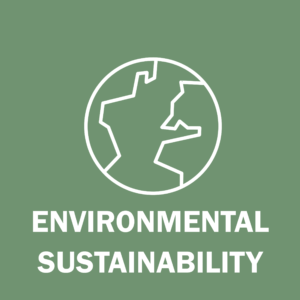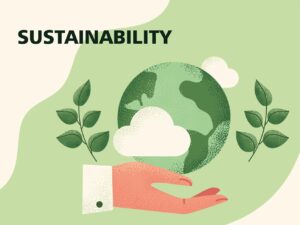What Is Sustainability and What Is Maple Ridge’s Example?
Sustainability can be defined as the integration of the economic, environmental, and social aspects of life. It refers to the idea of achieving long-term goals without compromising on the quality of life. Sustainability is an important goal for the global community because it allows for a better life for all. It is possible to achieve it by reducing the rate of population growth and using technology to preserve nature’s ecosystem services. Sustainable development is a global concern, which combines economic, environmental, and social concerns.
Sustainable development
Sustainability is important for both the environment and the economy. An economy that has a healthy environment can be an important driver of economic development. In many ways, sustainability is about making the most of available resources, without compromising the environment. Some examples of sustainable development are reforestation, wind power, and crop rotation. These strategies help improve agricultural practices and maintain green spaces. The Brundtland Commission defines sustainable development as: “Meeting present needs without compromising future ones.” This concept has a specific end goal: to satisfy and improve the quality of human life.
Sustainability is becoming a core part of business strategy. Companies of all sizes are realizing the value of sustainability as a business strategy. It shows a company’s commitment to long-term growth and appeals to customers and investors. Companies define their sustainability initiatives based on their objectives and core strengths. Here are some examples:
The environmental pillar of sustainable development focuses on the effects of human activity on natural resources and the quality of the environment. The fundamental aim is to minimize human impact on the environment while supporting the restoration of natural habitats. The economic pillar of sustainable development focuses on the strengths and opportunities of a dynamic economy. The economy should be vibrant, diverse, and competitive. Research and training projects are necessary to improve the economy and create new goods and services. It is important to consider different regions when developing sustainable development strategies.
In 2002, the United Nations organized a conference on environment and development, or Rio+10. The summit included representatives of 178 nations, and established the standards for sustainable development. In this meeting, 26 environmental standards were established, including guidelines for the protection of water resources, the regulation of particular activities, and the reduction of greenhouse gas emissions. During this meeting, the importance of protecting the environment became clear. The goal was to halve the number of people without access to clean water and adequate sanitation.
Sustainable development is an alternative way of developing in order to meet the present needs without compromising the needs of future generations. It also focuses on the production of resources without sacrificing future generations, or polluting the environment. It is also about ensuring that the productive assets of future generations are not unfairly depleted. The benefits of economic development should benefit future generations without harming the environment and polluting the atmosphere. This is a difficult task, but it is a necessary part of the challenge.
Economic sustainability
When it comes to business, economic sustainability refers to a business’s ability to continue operating and growing over a long period of time without negatively affecting the environment, society, or the community. Economic sustainability requires a business to operate efficiently over time and to produce profits consistently, without depleting the resources of the community or affecting other economic factors. To become more sustainable, businesses should develop strategies to make their operations more sustainable.
In a free market, demand and supply determine what products or services suppliers are willing to produce. The result is that the economic system can remain sustainable. The financial sector, however, inhibits the development of sustainable production by investing most of its resources in speculation that is inappropriate and unfair. This makes it difficult for ordinary businesses to raise capital and start new production companies. The finance industry promotes the current system of inequality and instability, and contributes to the world’s economic crisis.
The process of assessing the sustainability of a company’s operation is complicated. Businesses face various challenges, including resistance to change and the inability to track expenditures. Using an outside consultant can help companies evaluate their operations without bias. In many cases, this approach will yield tangible results. The objective of the process is to make the business more sustainable and to minimize its negative environmental impact. There are several important aspects of sustainable business operations, and each of these elements can be a key to long-term success.
The public sector should also be a partner in this process. By making public investments, governments should encourage companies that contribute to a better environment. By supporting green enterprises and local initiatives, the public sector will be helping to create a sustainable society. Developing an economic model based on these principles is necessary to move society forward. The process of achieving environmental sustainability will require a huge overhaul of the financial system. However, the process of implementing such measures is not as difficult as some might think.
The first step to creating a sustainable economy is to determine what resources the society needs to maintain and increase its overall prosperity. Sustainable development refers to developing a society that can provide a good living for future generations. This is accomplished through economic choices made by businesses and society. It is important to recognize that resources are limited and must be used wisely to meet the needs of future generations. Economic sustainability should also be based on the carrying capacity of the environment.
Environmental sustainability

Environmental sustainability is a concept concerned with long-term health and productivity of ecosystems and resources. It also focuses on intergenerational decisions. For example, burning coal may give a short-term benefit of cheaper energy, but it will create extra costs for future generations. In contrast, renewable energy sources don’t deplete the earth’s resources. Environmental sustainability also includes a variety of other considerations, including the production of biofuels and water management.
There are several standards for environmental sustainability, but they vary from country to country. Typically, environmental sustainability standards are set at a federal level. For example, the U.S. Environmental Protection Agency regulates air pollutants, refrigerants, and hazardous waste management. These regulations enforce minimum standards for air and water quality, and monetary penalties for non-compliance. Other countries and cities may implement more stringent standards. Some cities, such as New York, are even banning older fuel-efficient vehicles.
Other examples include companies that reduce or eliminate the use of toxic pesticides. These businesses are responsible for not only their profits, but also for the health of people and the environment. In addition, these companies are more likely to pay fair wages to their employees and be competitive in the market. These companies may even be more efficient than their conventional counterparts. This may be the difference between environmental sustainability and social justice. The world needs businesses that care about its environment.
Companies should also consider the entire life cycle of their products. For example, an eco-friendly company should consider the use of renewable energy sources in the production of its products. They should also ensure that their suppliers use renewable energy sources, and recycle waste whenever possible. By incorporating environmental sustainability into business operations, companies can ensure that their products are not only environmentally-friendly, but also cost-effective. If these companies want to attract consumers who share their values, they should make sure to consider all these factors.
For example, the environmental costs of steel manufacturing operations can be reduced by installing solar panels. Although this would require a long-term investment, solar panels would provide renewable energy for the company. Such renewable energy is particularly important in places with fossil fuel grids. In addition to reducing energy costs, businesses can also consider the raw materials used and how they are distributed. The effects of collective action can be cumulative. This way, companies will reduce their costs and increase their profits.
Social sustainability

One of the most important aspects of sustainability is social sustainability. This concept is very important for the sustainable functioning of Maple Ridge. It is defined as the capacity of a social system to continue functioning at a specified level of social well-being indefinitely. Unlike economic and environmental sustainability, which are easily understood and quantified, social sustainability involves understanding the impact of a company’s activities on people and society. This concept is based on the triple bottom line accounting framework, which a corporation uses to evaluate its performance.
One aspect of social sustainability is the ability to maintain a continuous supply chain. This is because the health and well-being of workers reduces the risk of disruptions in the supply chain. Additionally, proper training reduces the risk of staff shortages and product defects. Companies that neglect social sustainability tend to make costly mistakes in their operations. For example, a tired truck driver is more likely to cause an accident, resulting in a higher risk of casualties and destroyed goods. This can cost a company in sales.
Another important aspect of social sustainability is equity. Generally, countries that have the best economic performance also have the highest levels of social justice. In Zambia, for example, there are many people who have little access to green space, which prevents them from enjoying the benefits of being outdoors. However, this issue is not discussed as much. Social justice must go hand in hand with sustainable development. The goal is to make the world a better place for everyone.
One of the most important aspects of SocSus is community participation. In addition to being environmentally friendly, SocSus emphasizes the social cost of a product. Companies that are socially responsible and ethical tend to have a better reputation with consumers. A company should invest in hiring people from diverse backgrounds. This will not only increase its chances of being admired by society but will also help the business perform well. In addition, it should promote a healthy work-life balance for its employees.












